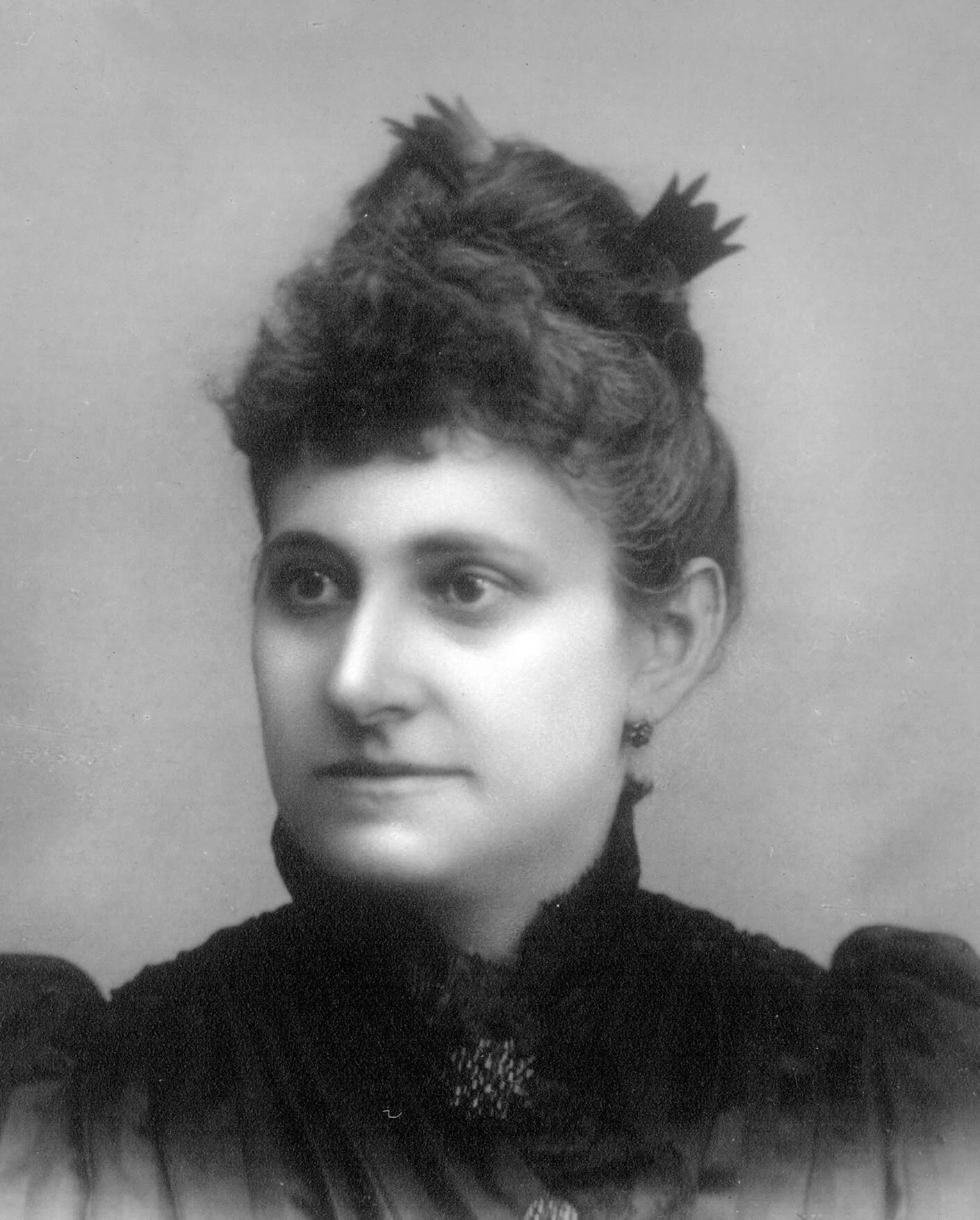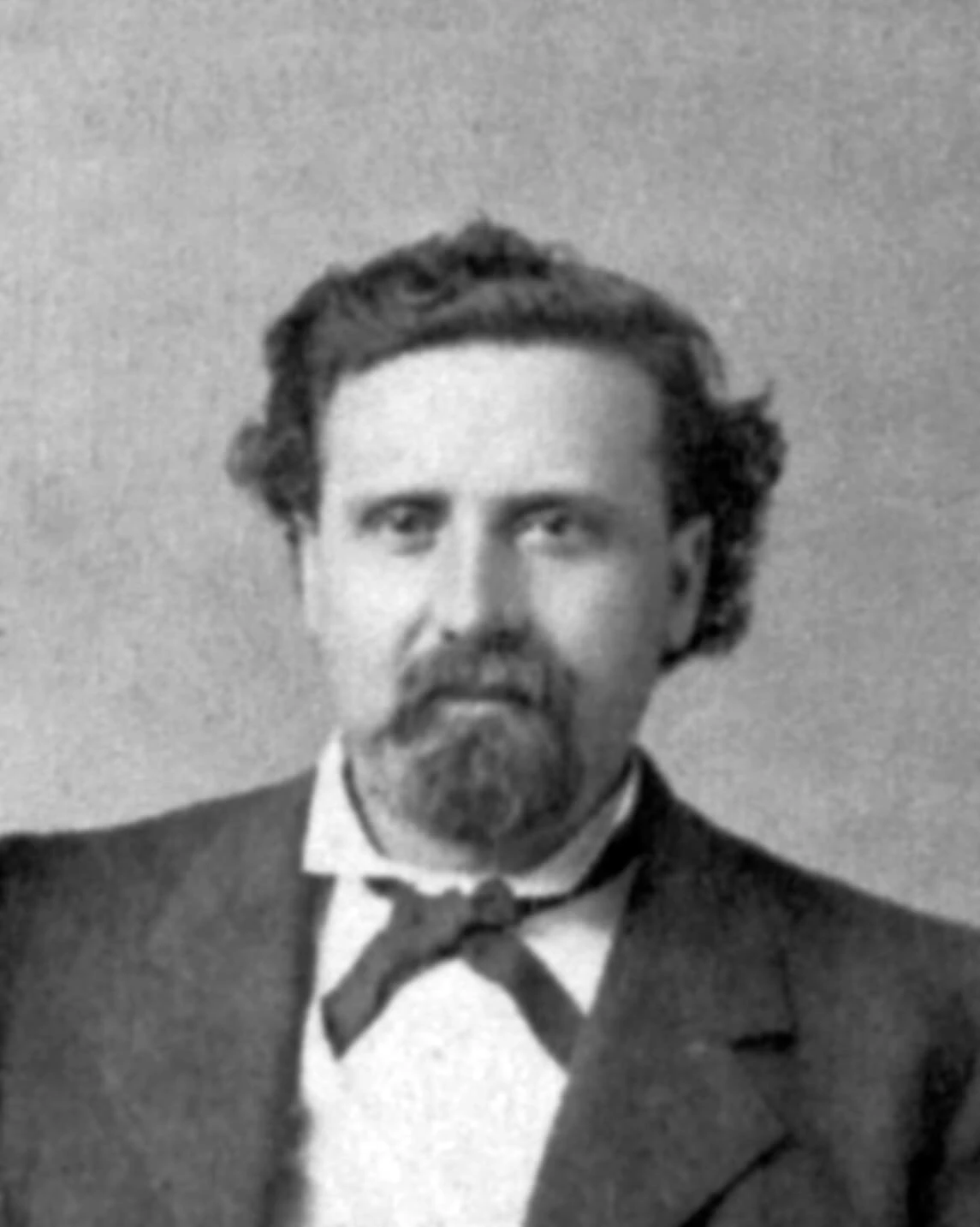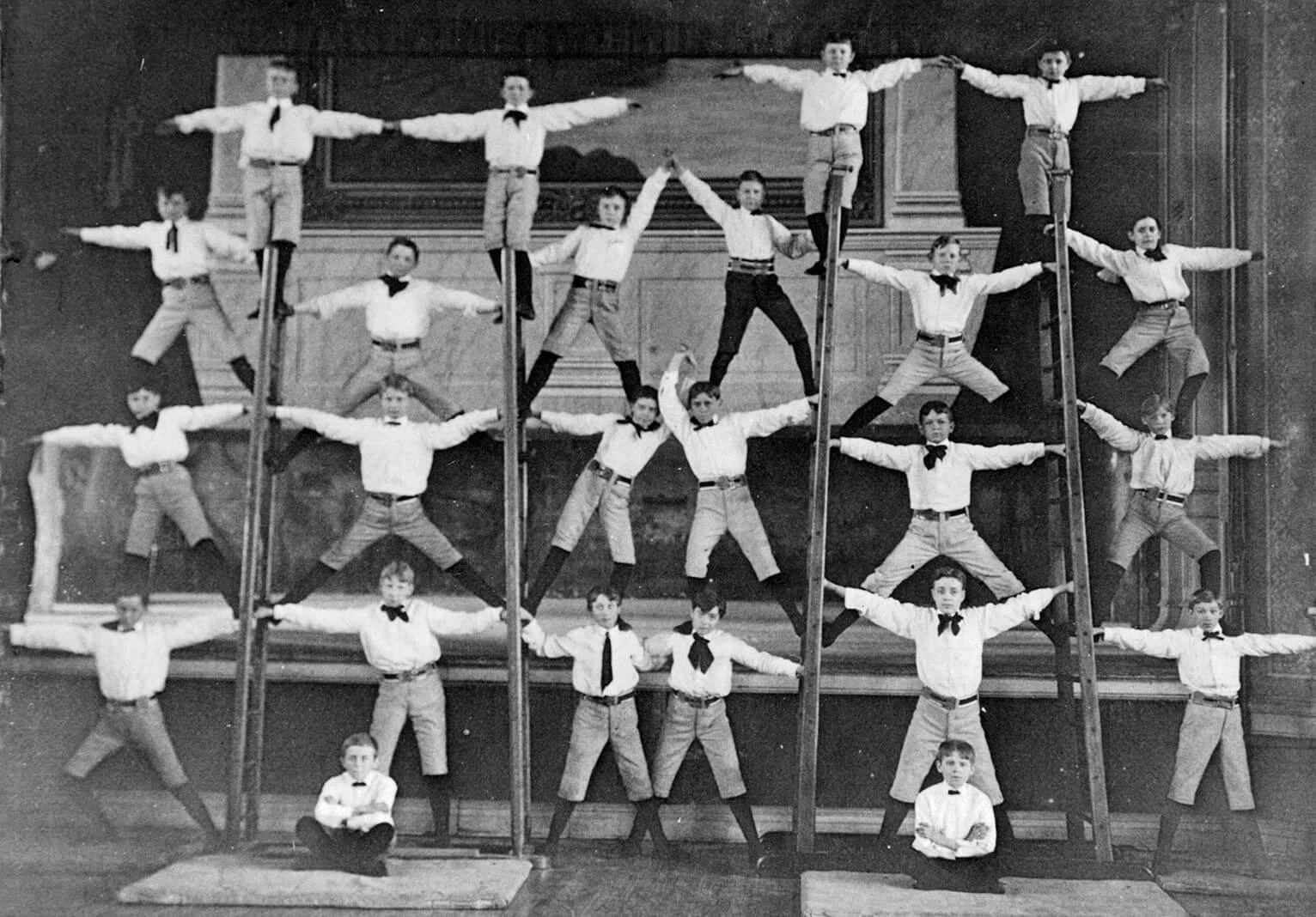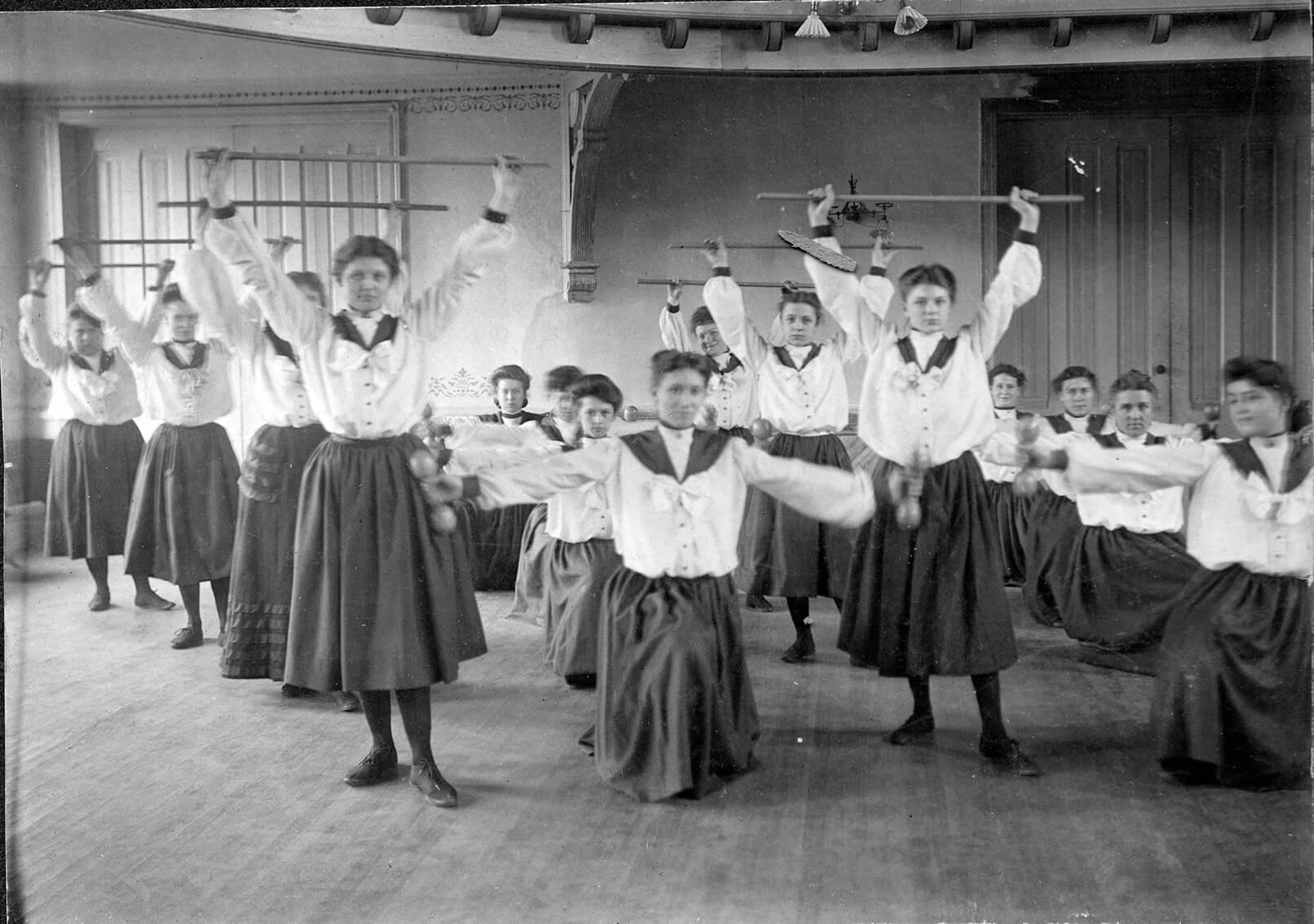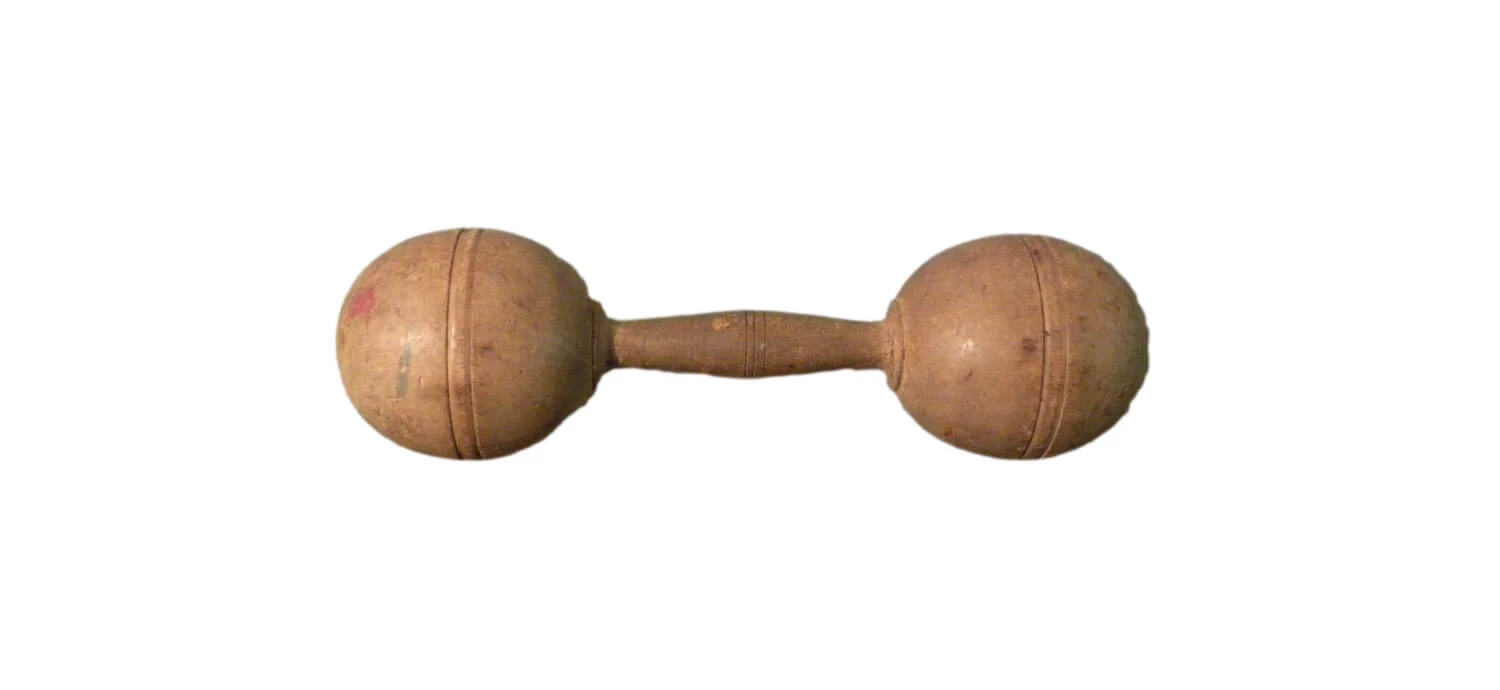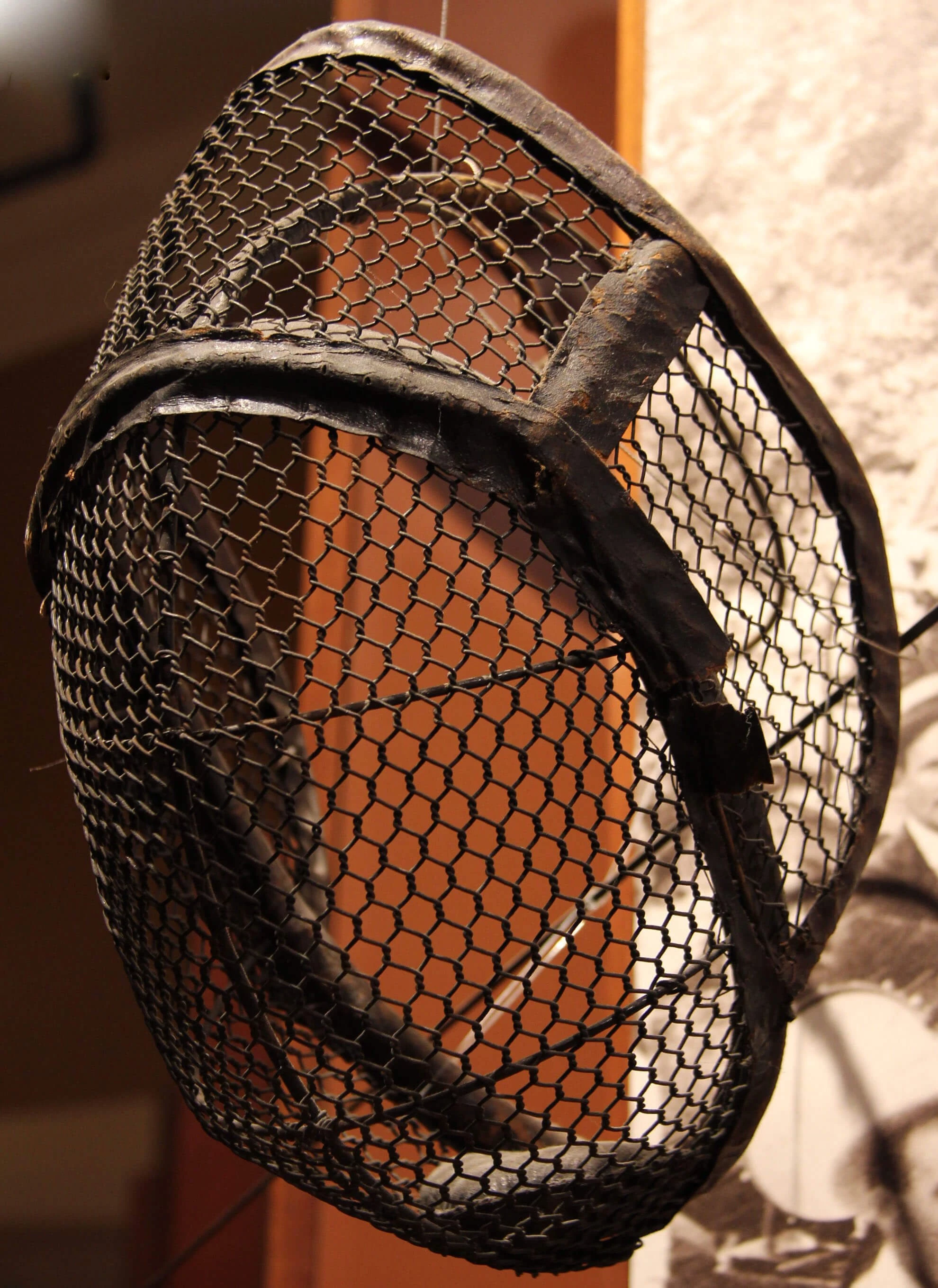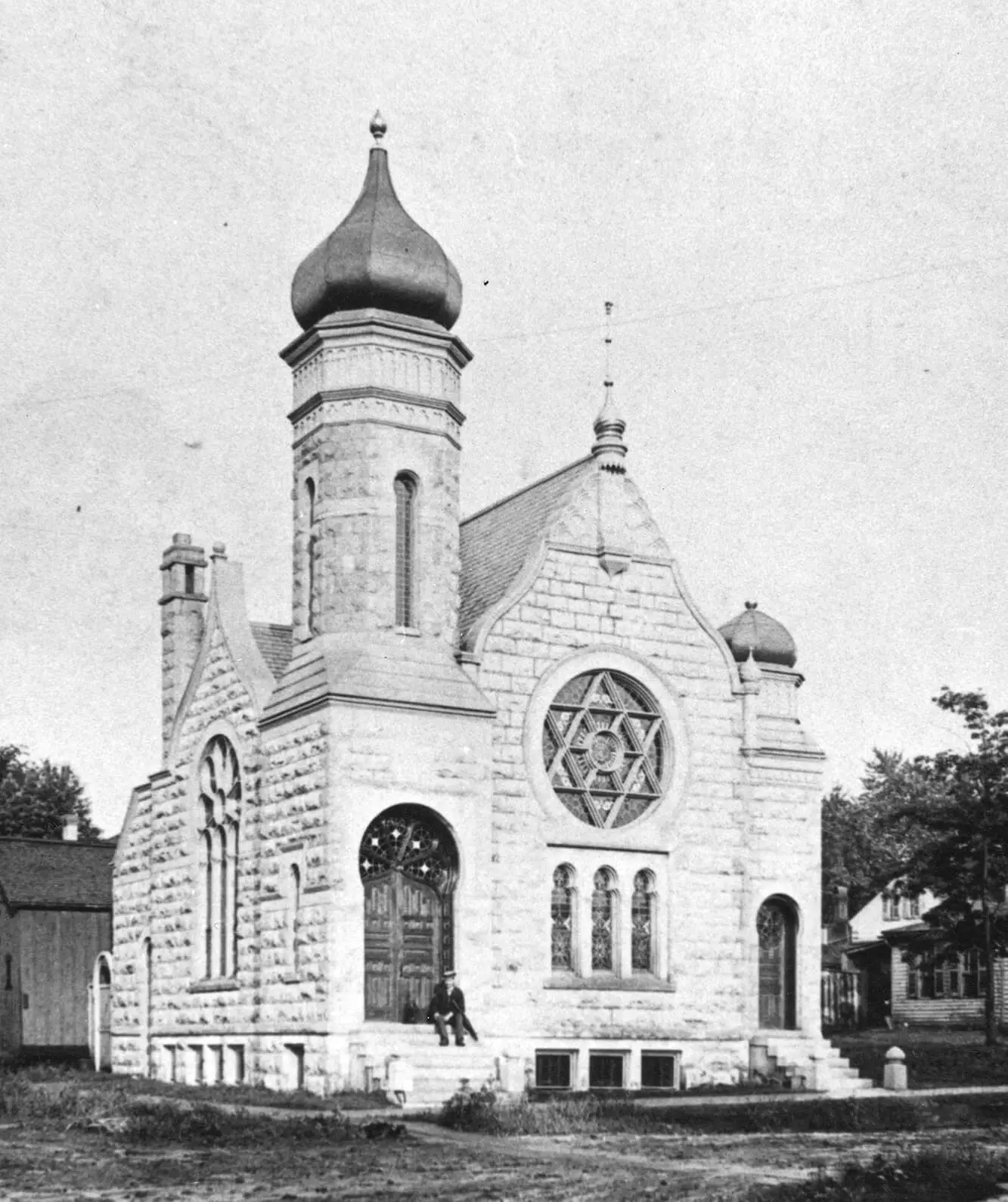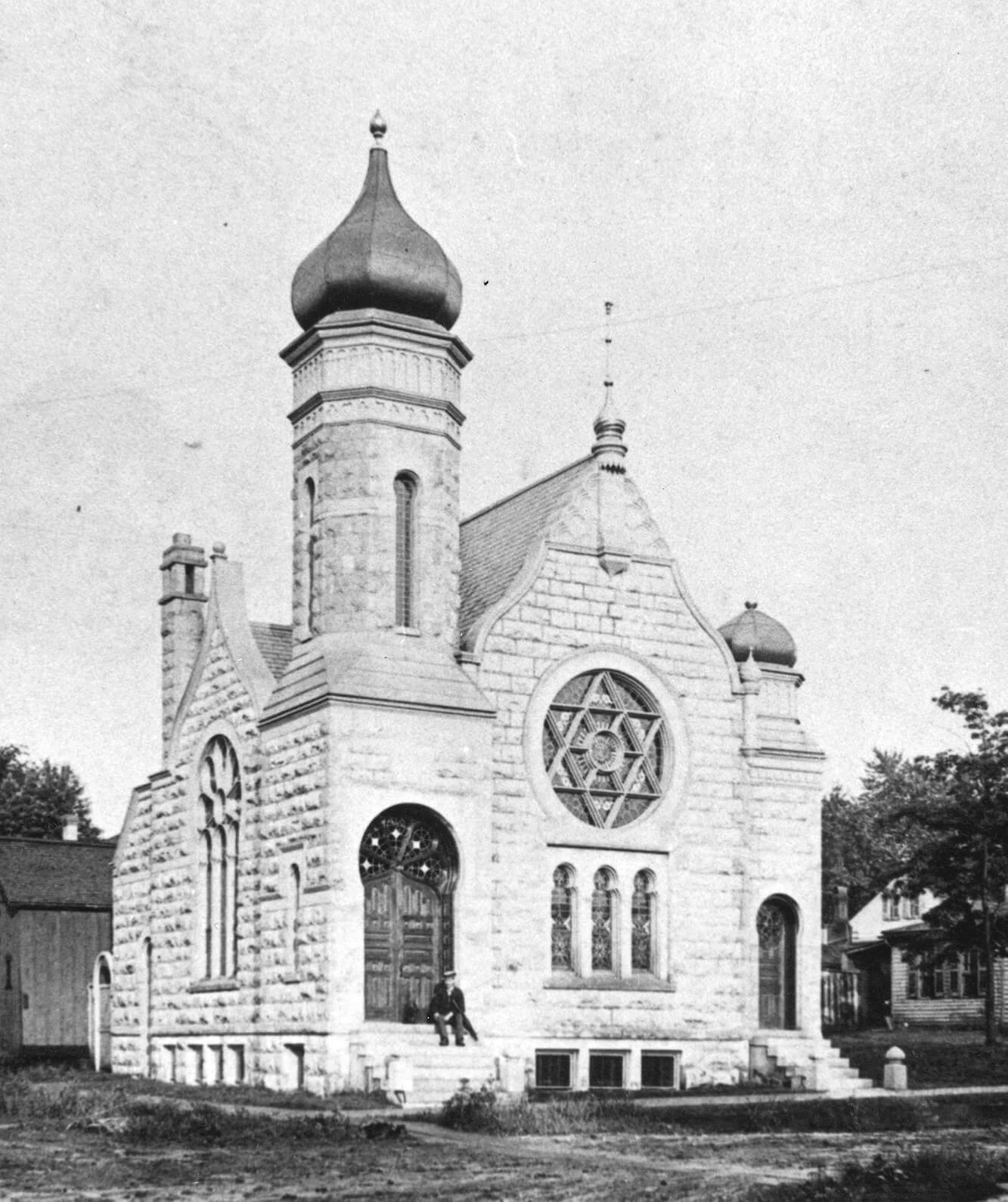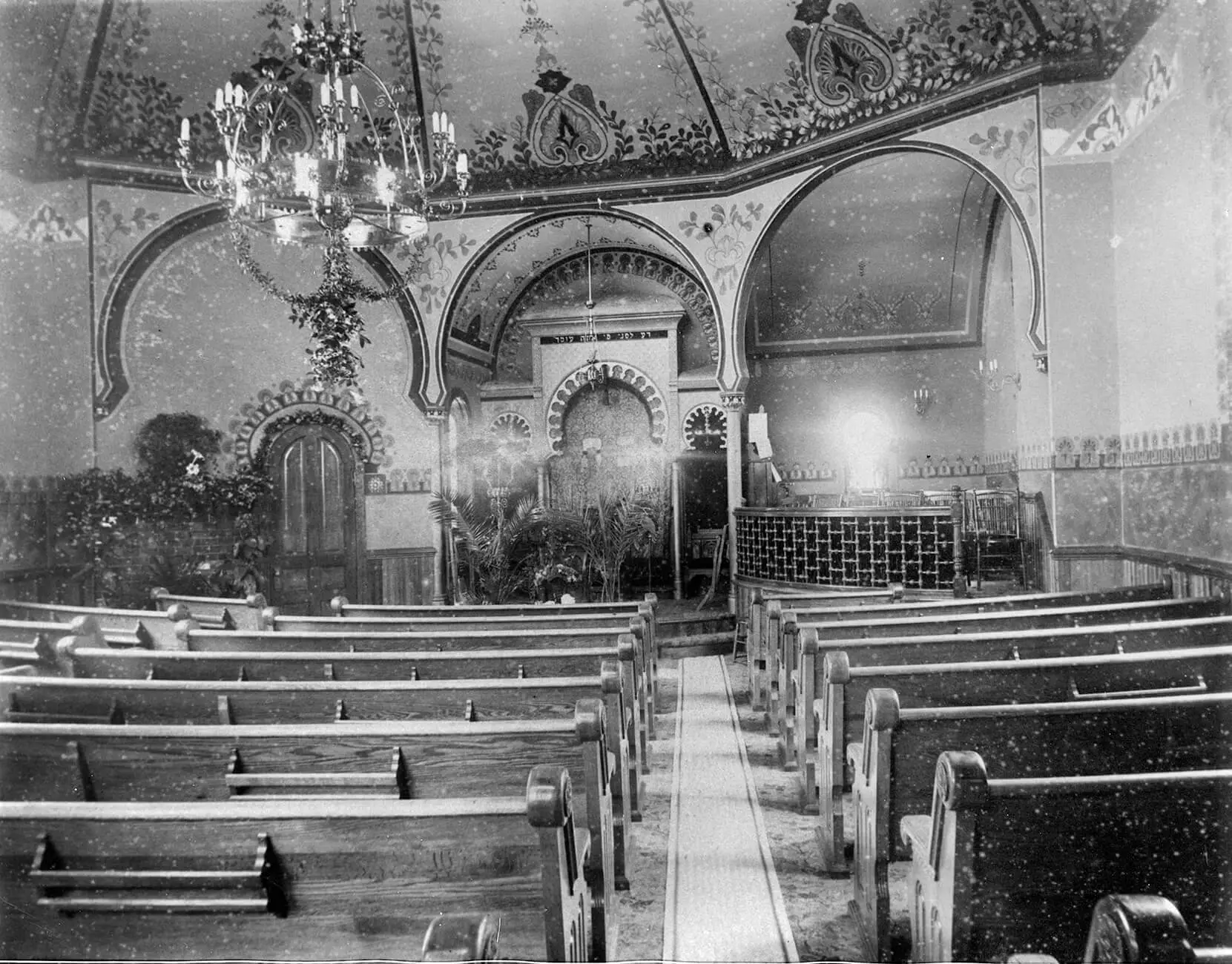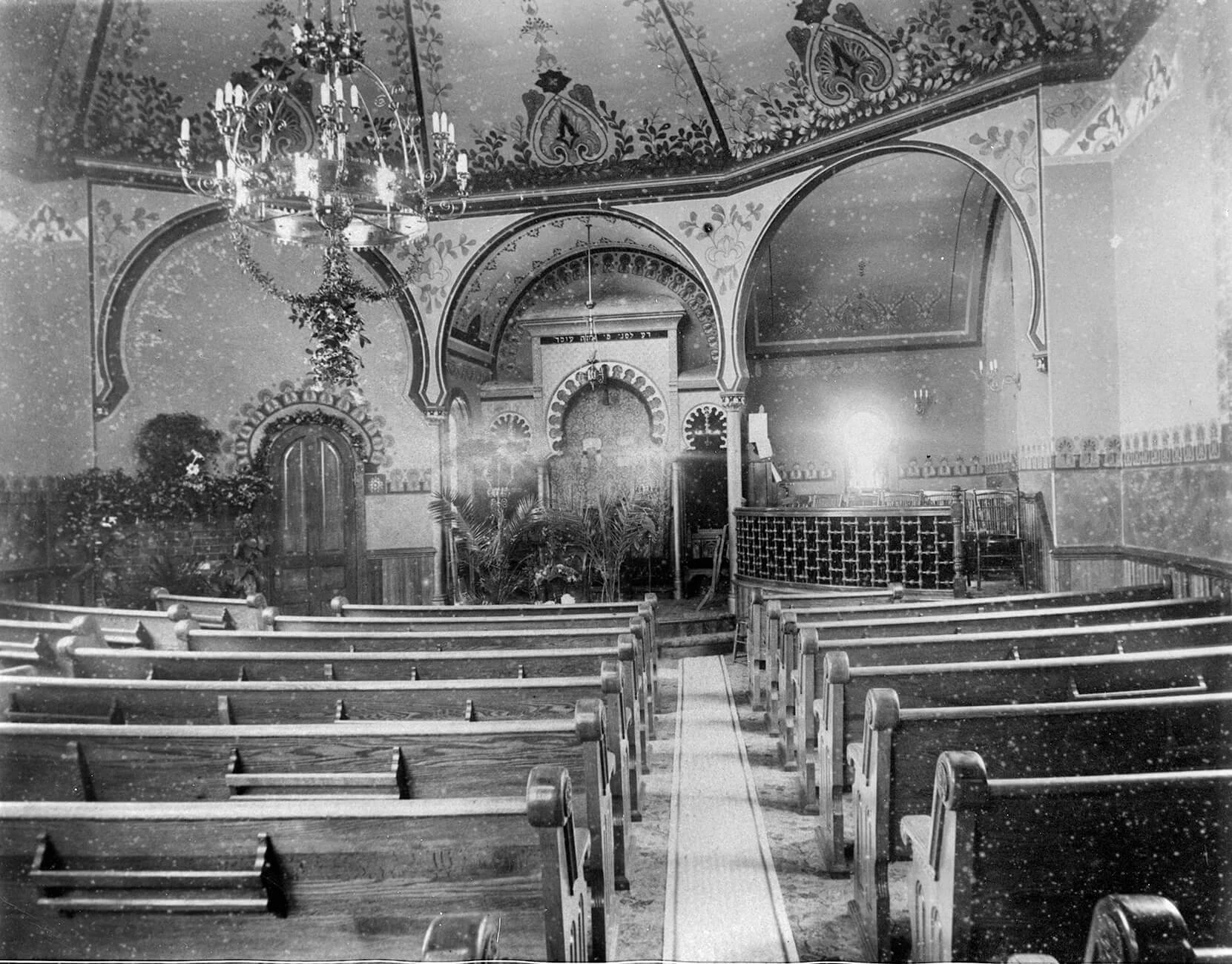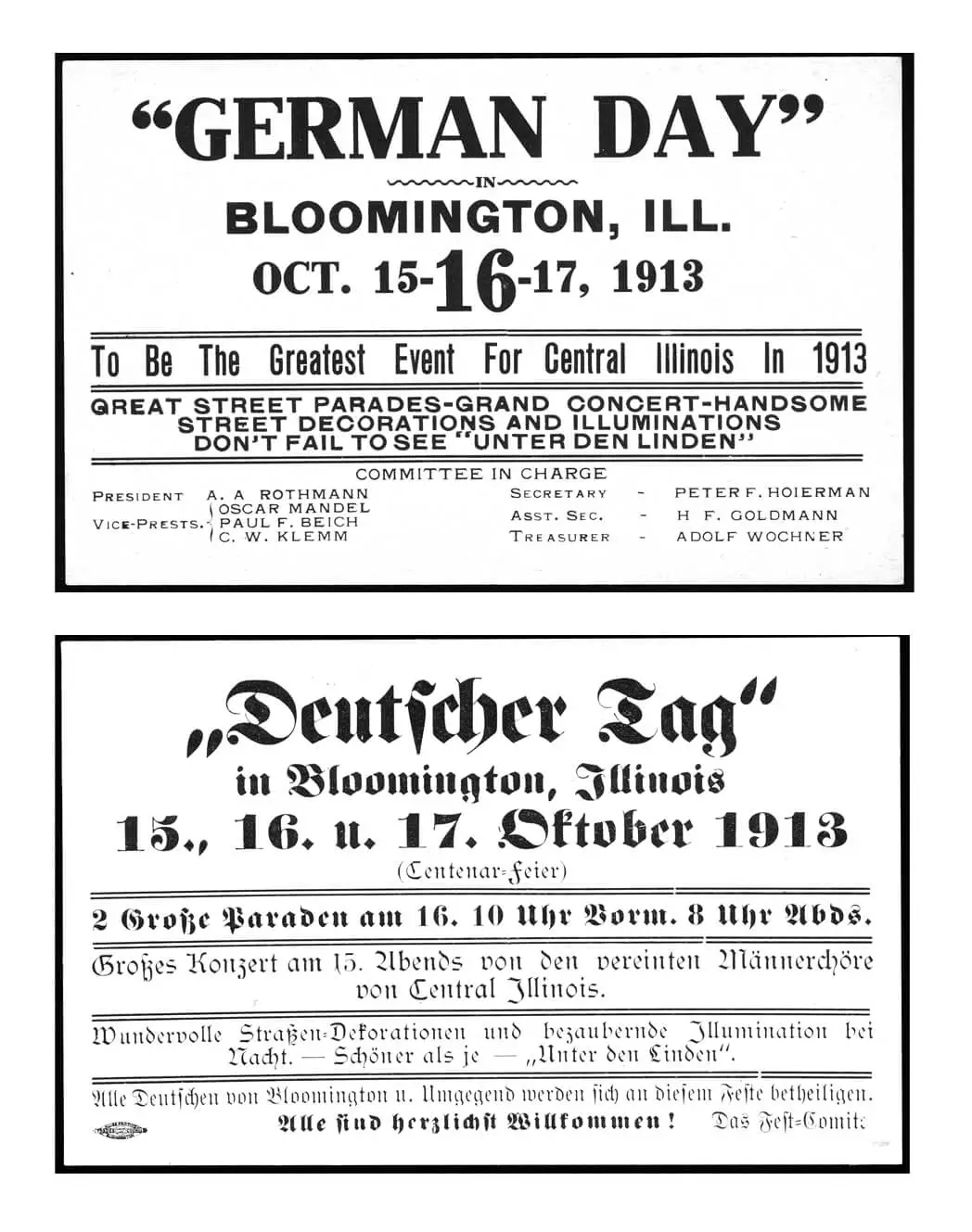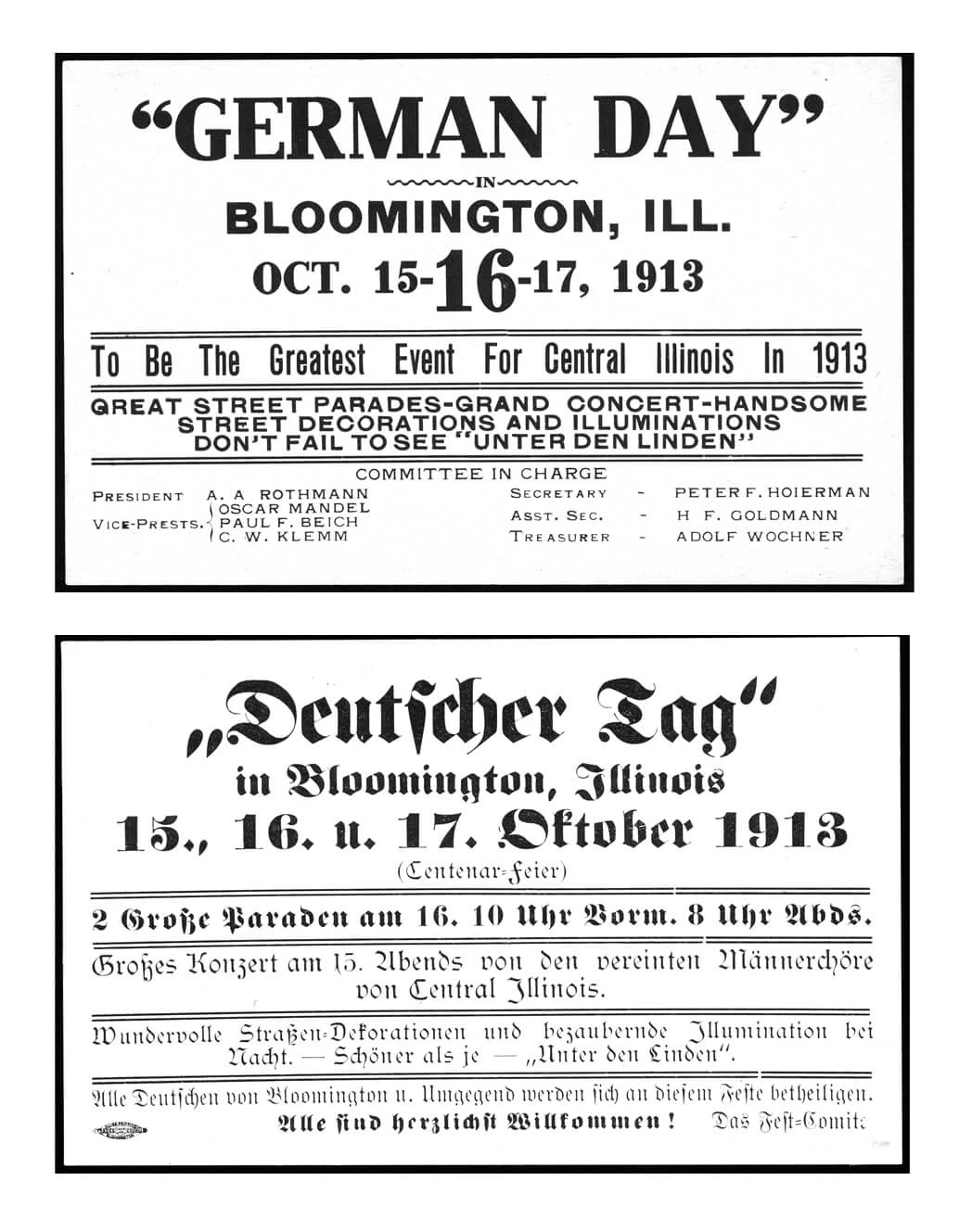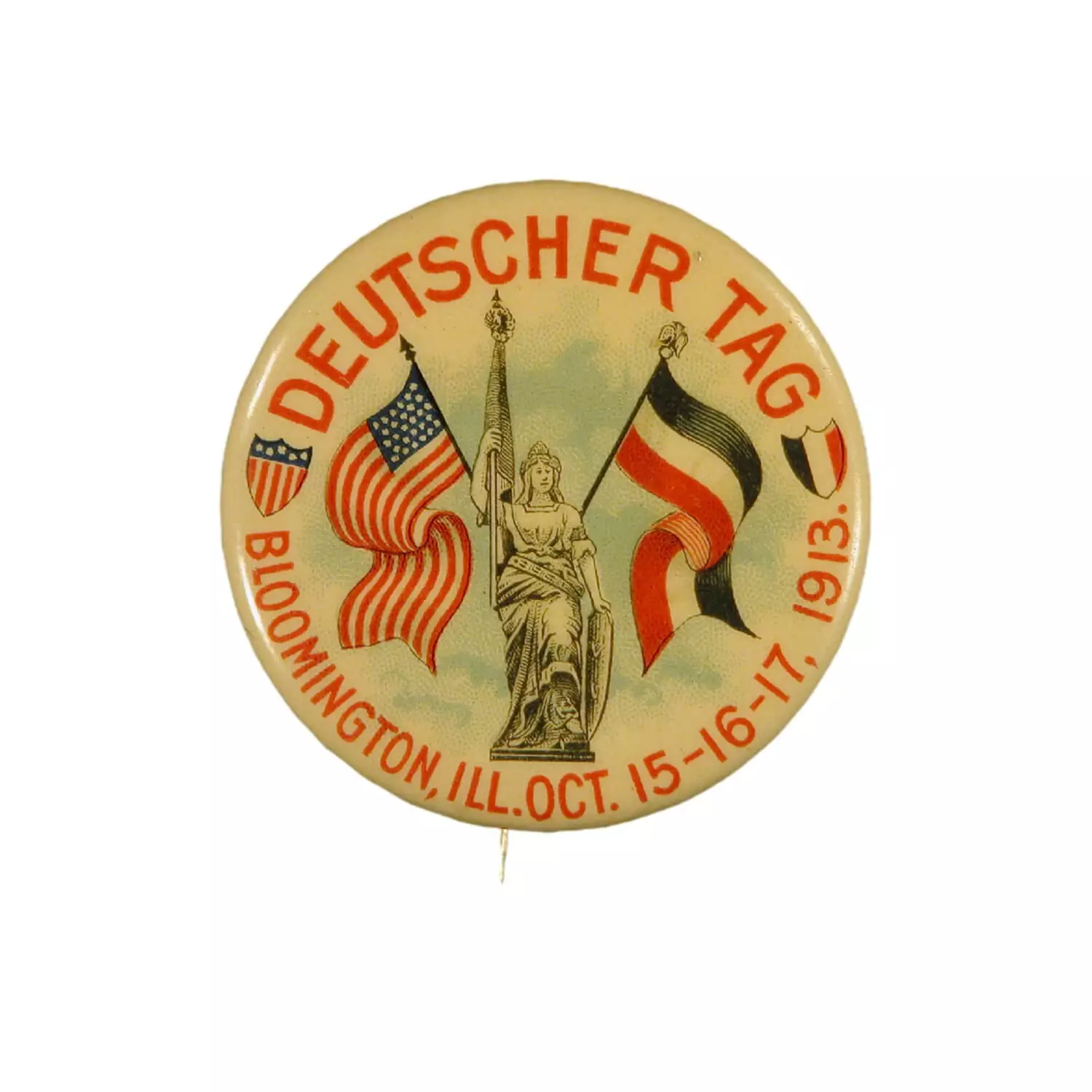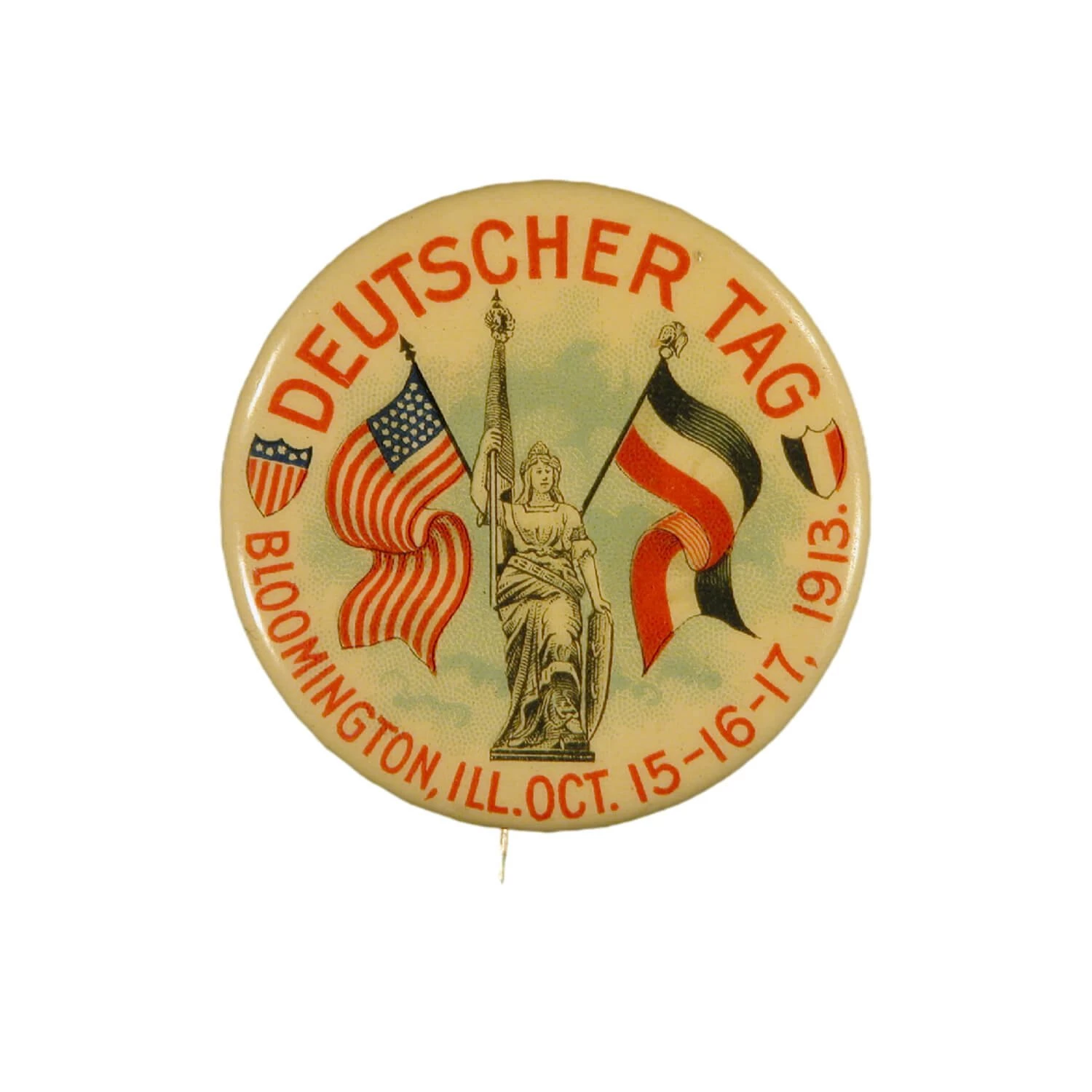A Cosmopolitan Place – Livingston Family
The Revolution of 1848 motivated many people living in the German states (Germany did not become a single nation until 1870) to immigrate to the United States. The feeling that life would be better in America, especially for German Jews, was also a strong incentive.
In 1860 Hannah Eliel, age nine, boarded the sailing ship Clobus with her teenage sisters Betty and Caroline. They were headed to New York and a near disaster.
The journey was expected to take two to seven weeks, but after 12 weeks the girls were worried. They had still not reached New York where their brother was waiting for them. They were also frightened as on several occasions they had overheard anti-Jewish talk on board.
One fateful morning...
“Loud voices, moaning and screams from all directions roused us ... something terrible had happened... The passengers were on deck, crazed by the knowledge that our ship was on fire... no one that has not witnessed such a catastrophe can imagine or believe that men and women, before always quiet and sensible, could at such a time become quite crazed, almost inhuman... Help had to come or we would soon be victims to the flames or the terrific ocean... At last a freighter was sighted. With what joy we beheld the ship coming toward us.”
— Hannah Eliel
Hannah and her sisters survived and were reunited with their brother.
Hannah grew up in LaPorte, Indiana, where she met many German Jews like herself. But it was a handsome German visitor from Bloomington, Illinois who really caught her eye.
Aaron Livingston emigrated from Germany in 1855, and settled in Bloomington after the Civil War.
In Bloomington Aaron started a dry goods store with his cousins. He became acquainted with Hannah during visits to friends in LaPorte.
Silk bodice, circa 1875

View this object in Matterport
Hannah had excellent taste in clothing and may have worn this bodice to the Hebrew Charity Ball.
Donated by: Hannah Livingston, John and Barbara Grimm
777.318, 914.4902
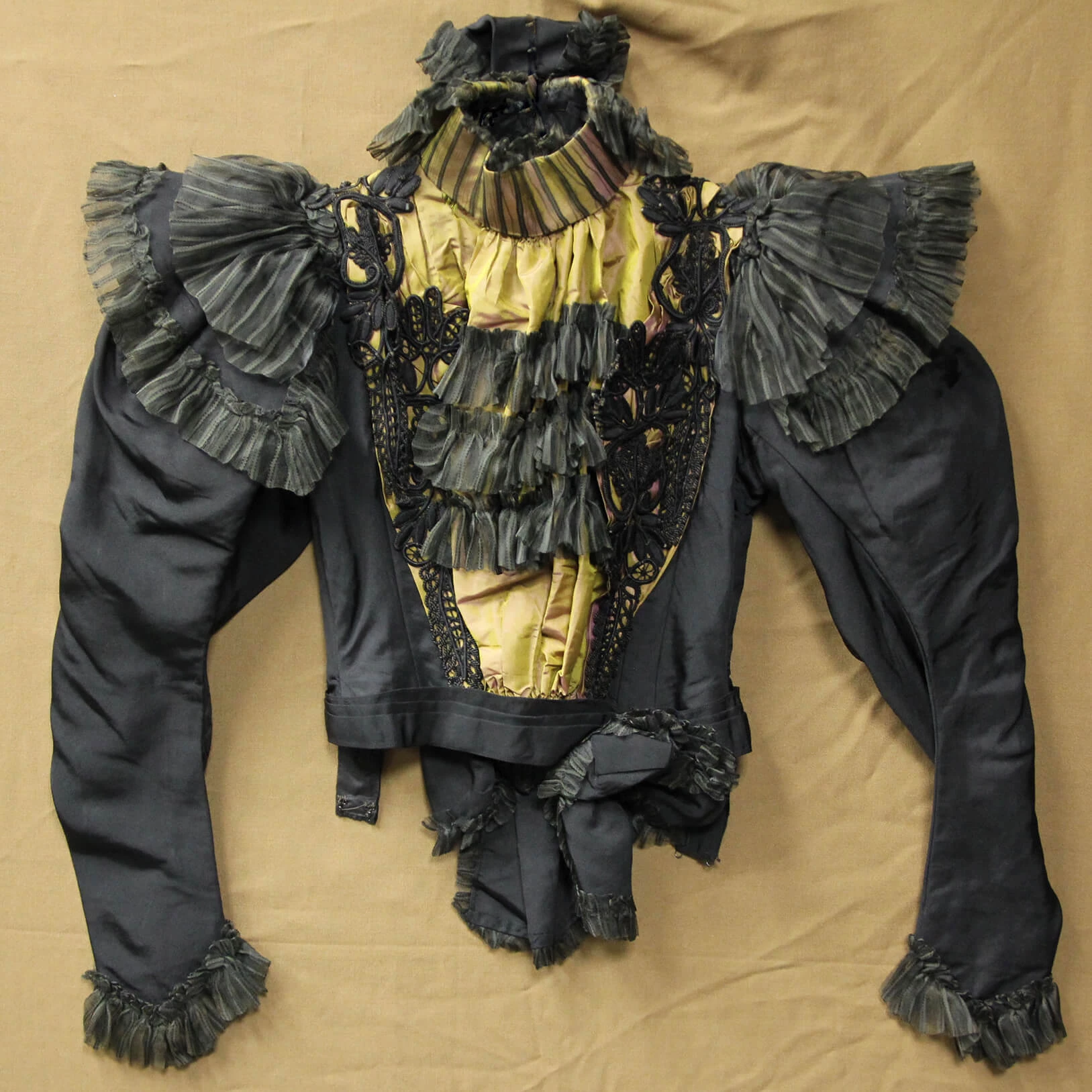
Man's tuxedo, circa 1895

View this object in Matterport
Aaron Livingston would have worn a tuxedo like this one — the best and most stylish of the time.
Donated by: Mildred V. Jacobs
844.2250

Aaron’s business success enabled him to build a fine new home for his wife and growing family.
The family lived on West Grove Street until 1880 when a grand new home was built at 210/212 E. Jefferson Street.
Like so many others in Bloomington’s German community, the Livingstons were members of the Turnverein.
The Turnverein, housed in Turner Hall, was the cultural hub of Bloomington's large and influential German community. It provided an outlet for athletic, musical, and theatrical expression, as well as a welcome environment for social activities.
“A Sound Mind in a Sound Body”
— Turnverein Motto
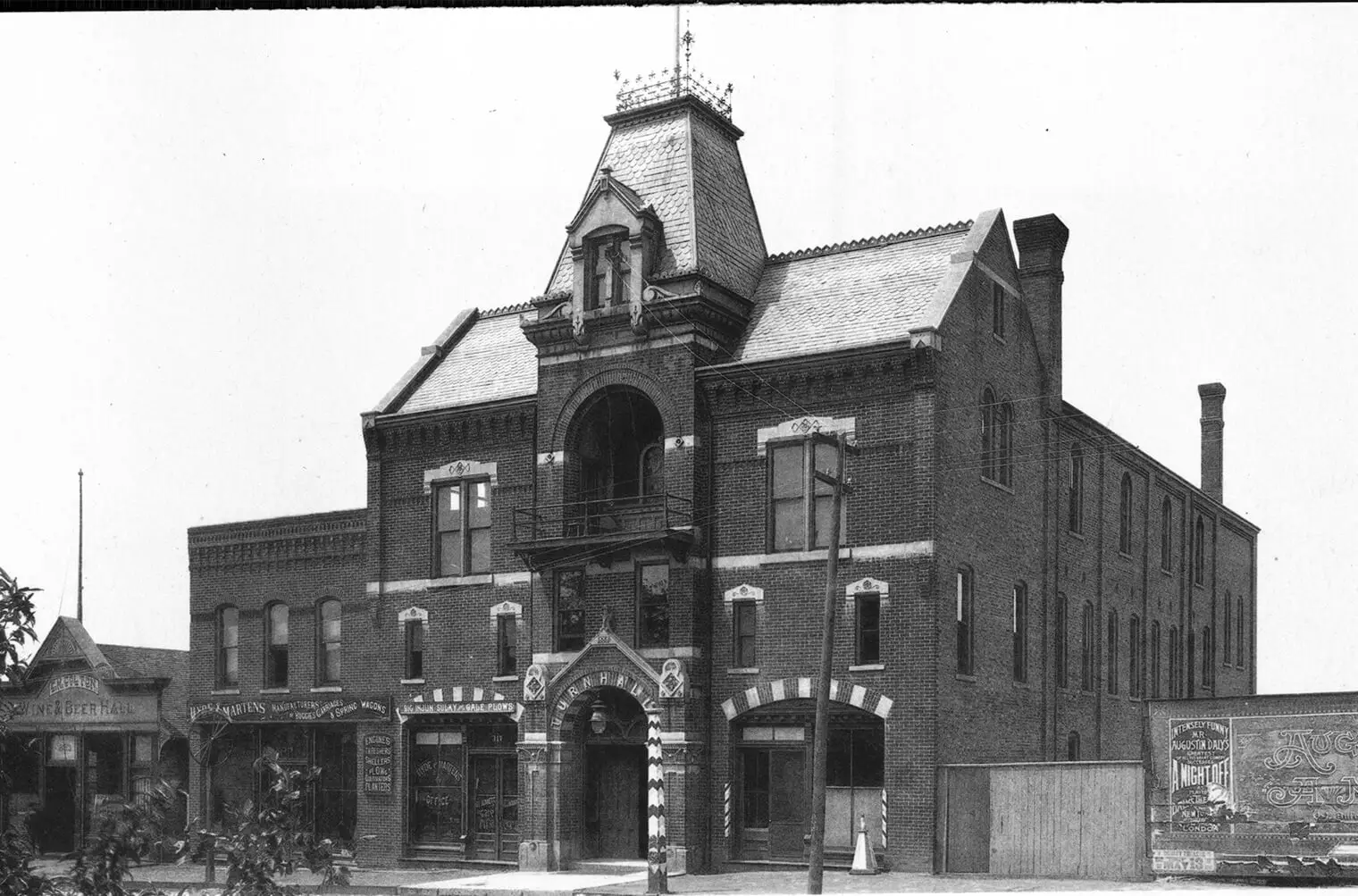
Located on the 300 block of South Main Street in 1883, Turner Hall was home to the local Turnverein (gymnastic society), an association formed to promote physical activity. Turner Hall was also a center for German music and dramatic arts. The building was designed by George Miller, a Bloomington architect of German descent.

Organized in 1855 the club restricted membership to the German-born and their children, but was otherwise an inclusive group. Membership included Protestants, Catholics, Jews, and atheists of the working, middle, and upper classes.

In 1897 Turner Hall hosted a program of gymnastics that featured tumbling, balancing, and club swinging, interspersed with music and dramatics. Programs like this one occurred on a regular basis and were advertised in both English and German newspapers. This advertisement was featured in the German Language Bloomington Journal.
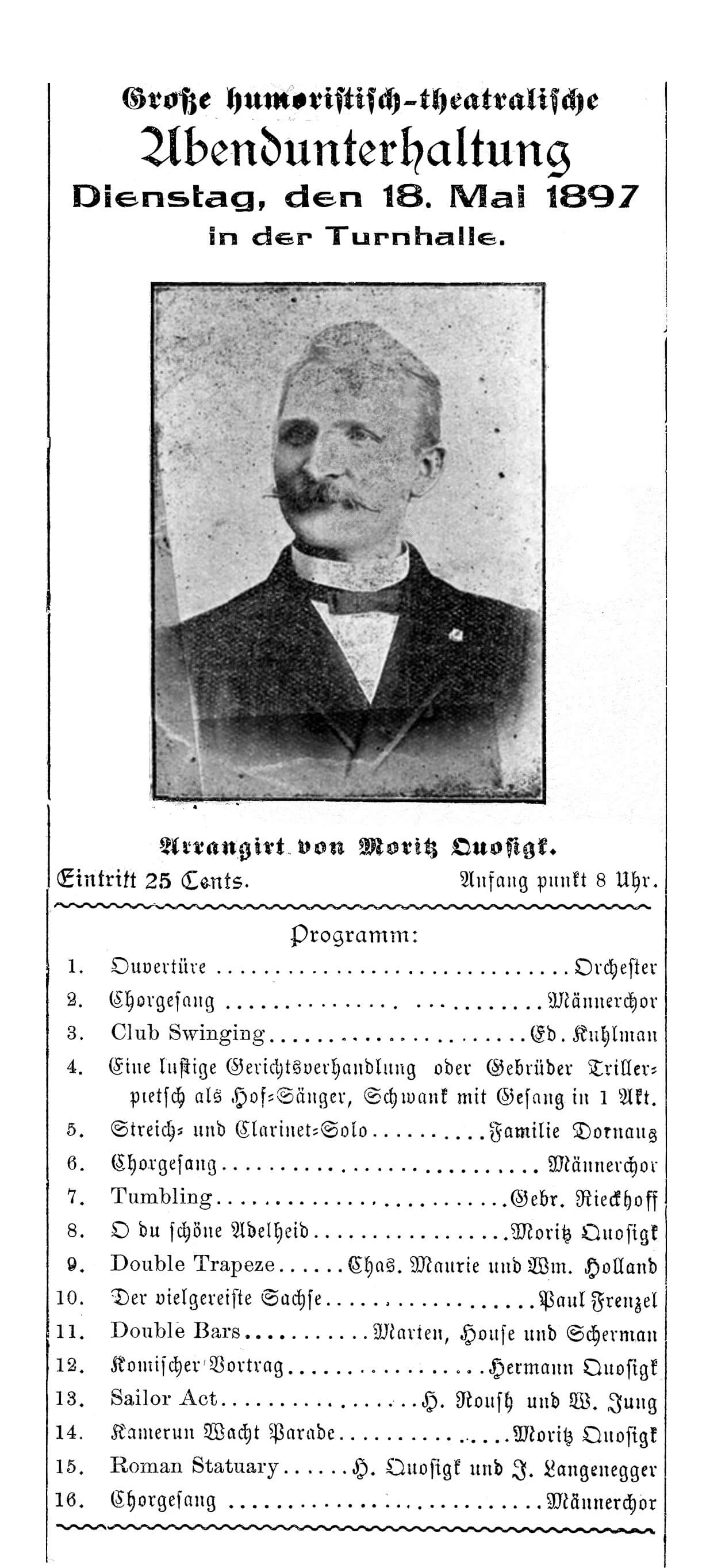
Raising money to build Bloomington's first Jewish temple was a challenge taken on by Aaron and Hannah, along with other members of Bloomington's Jewish community.
By 1883 funds were being collected for the construction of a temple.
Local Jewish leaders did everything in their power to strengthen Jewish identity and family life while fighting anti-semitism and bigotry.
Aaron was a founding member of Bloomington’s Abraham Lincoln Lodge No.190 of the Independent Order B'nai B'rith, organized in 1872.
Hannah helped to organize the Moses Montefiore Temple Sisterhood.
This group planned money making activities to be used towards the construction of the temple, and later to support the temple’s religious school.
Rabbi Cadden emigrated from Germany in 1883 to be Bloomington’s first rabbi. There were 18 Jewish families in the first congregation.
German Day
In October 1913 McLean County’s German community presented a celebration of language and culture unlike anything ever seen in Bloomington, before or since.
Over 20,000 people attended Deutscher Tag (German Day). The three-day celebration honored the 100th anniversary of the Battle of Leipzig, a decisive defeat for Napoleon that marked the rise of the German nation state.
The celebration opened with a re-creation of the famous Berlin boulevard Unter den Linden (Under the Linden Trees) along East Washington Street. It was followed by a concert at the coliseum.
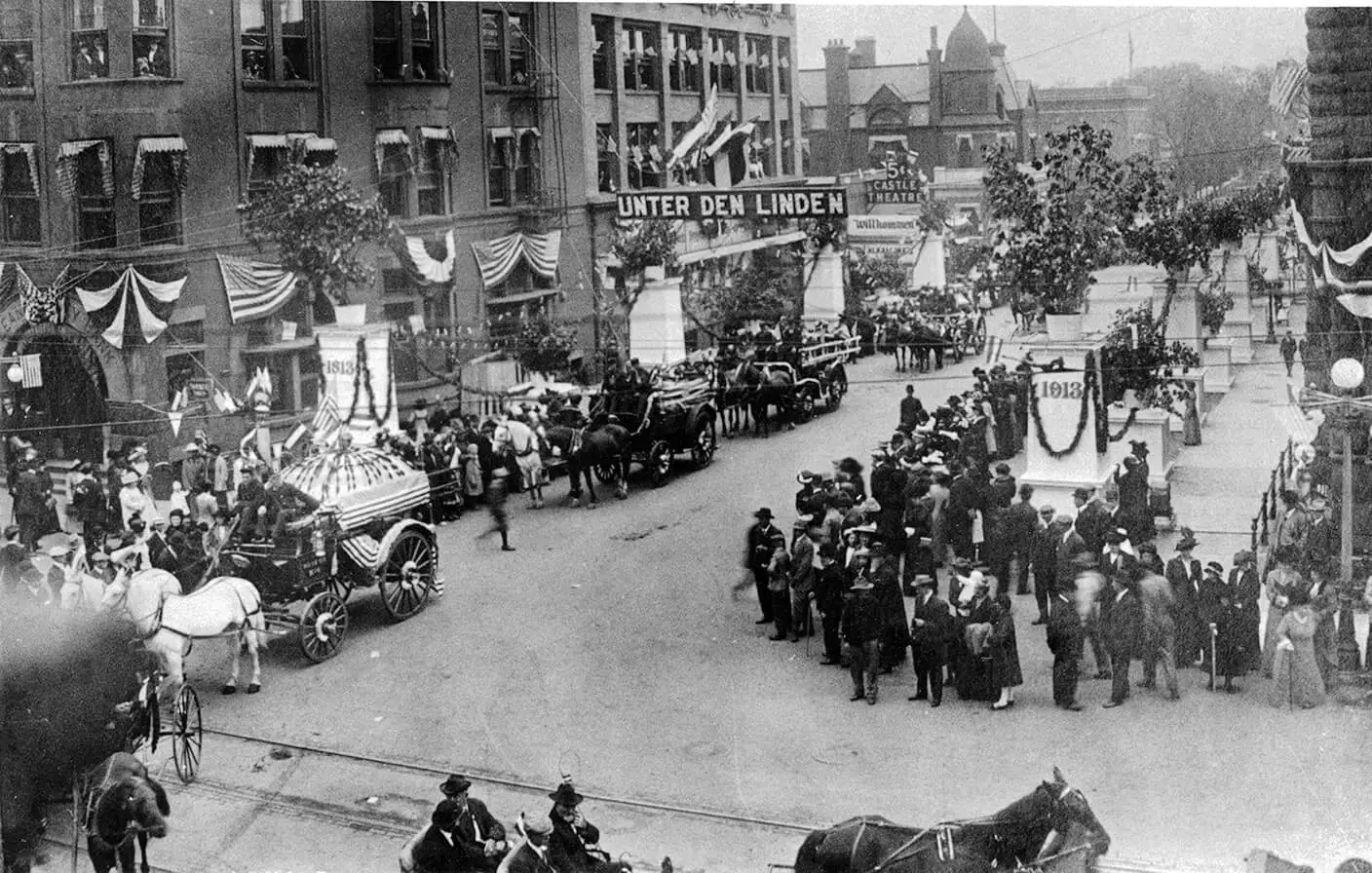
To recreate the Berlin Boulevard, both sides of the street were lined with decorative structures, and buildings were draped with German and American Flags. The parade featured five floats recounting the epic story of the German immigrant in America. Bloomington's public schools were closed so children could watch the procession. Crowds along the route swelled into the thousands to see the elaborate parade floats.
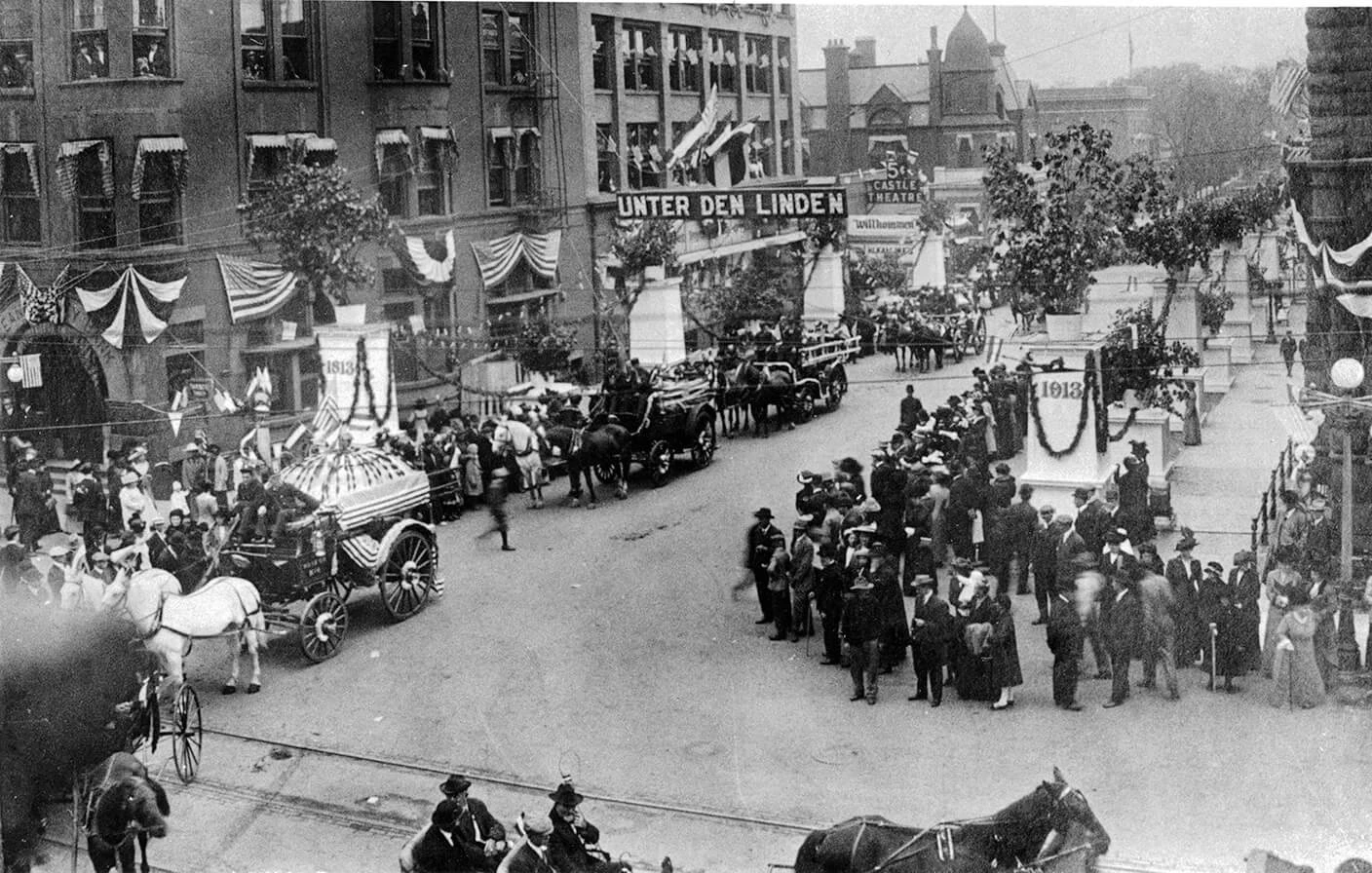
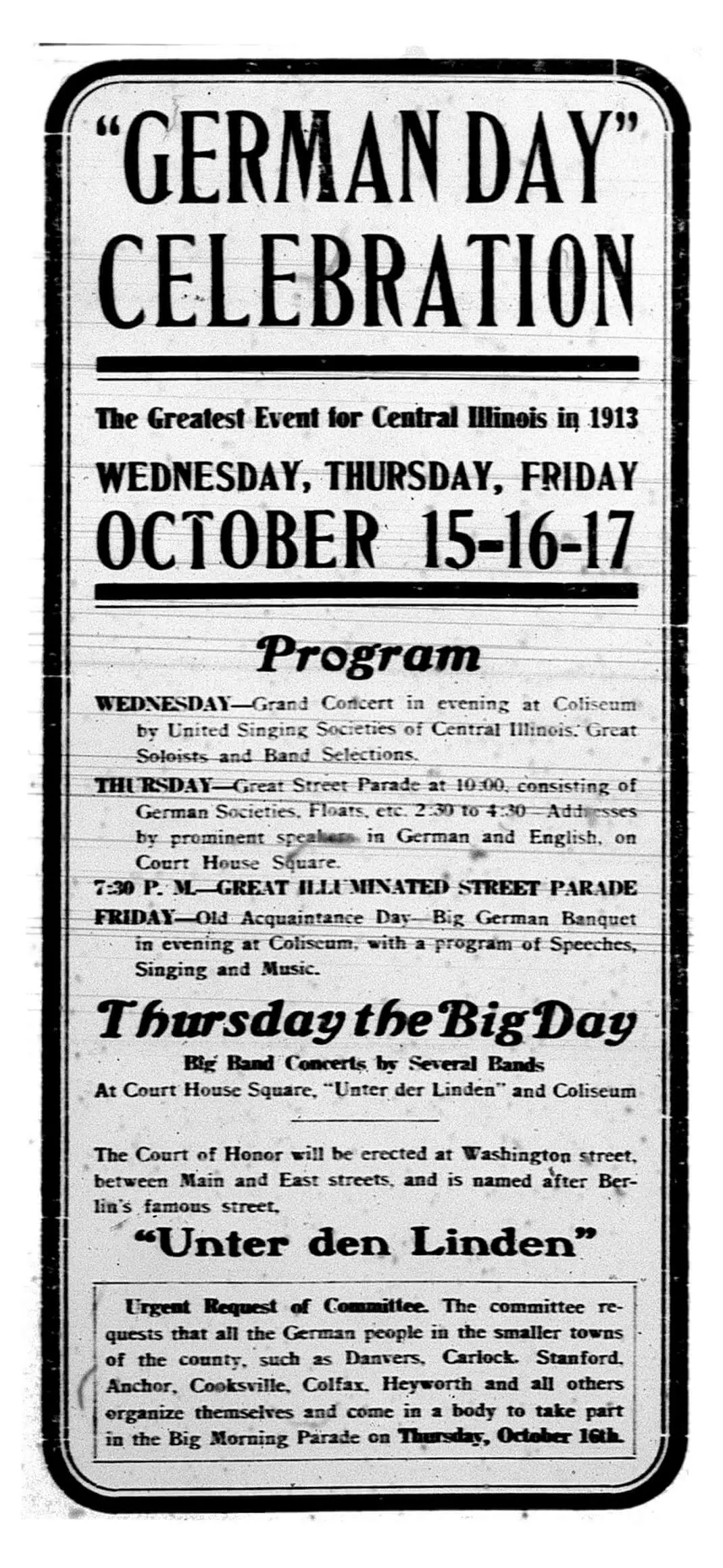
Local newspapers, including the German language newspaper, the Bloomington Journal, advertised the event. The Daily Bulletin published this advertisement.
One of the floats carried Columbia, a young woman representing America, another carried Germania. As part of the program, the two women shook hands — a symbolic gesture of friendship.

German Day Parade sashes Columbia and Germania, circa 1913
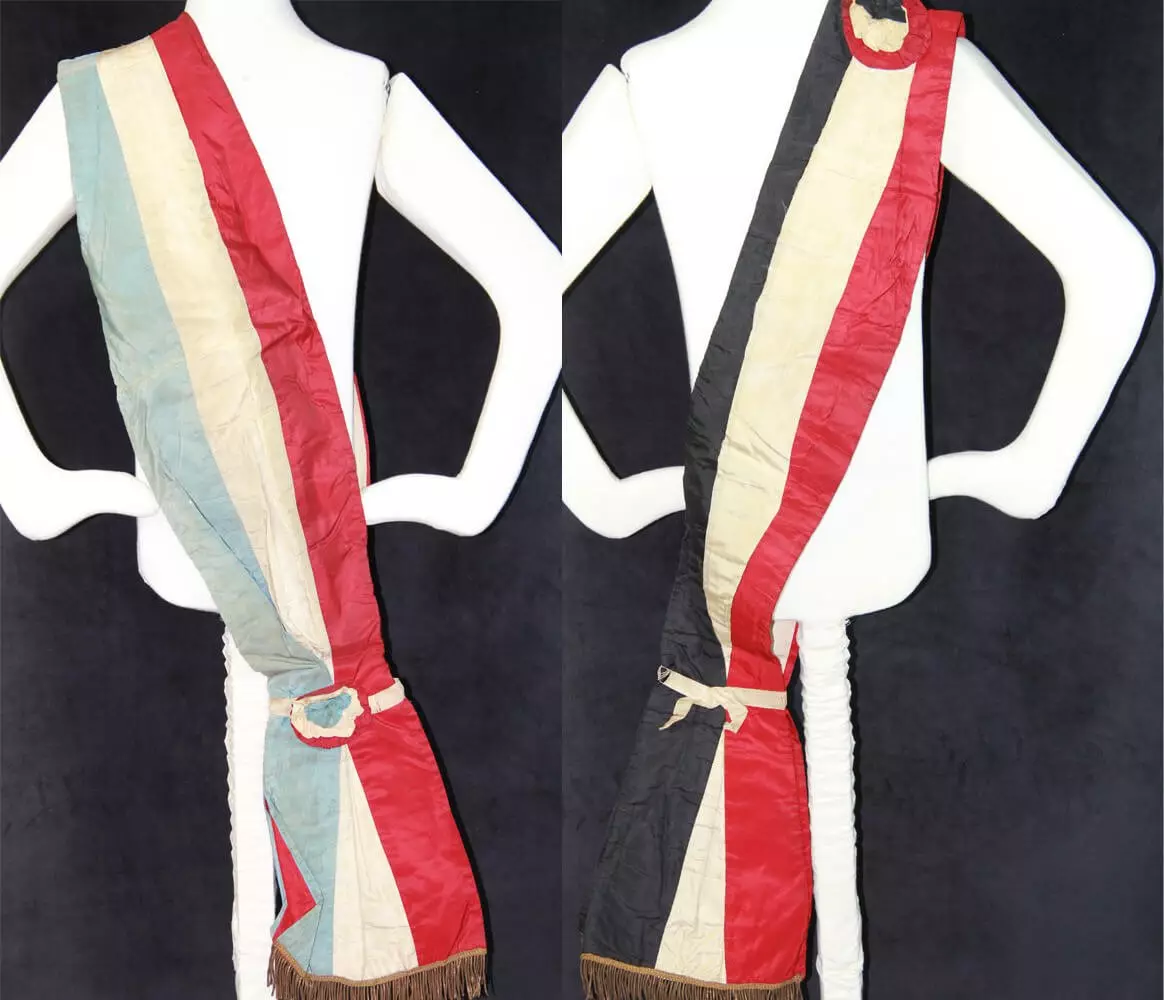
View this object in Matterport
Parade marchers accompanying the Germania float wore parade sashes representing the flag of Imperial Germany, while marchers accompanying the Columbia float wore sashes representing the American Flag.
Donated by: Fern Bastings
856.1589, 856.1590

The following year World War I began and German Day celebrations ended.
 Making a Home
Making a Home
 A Community in Conflict
A Community in Conflict
 Working for a Living
Working for a Living
 Farming in the Great Corn Belt
Farming in the Great Corn Belt
 Abraham Lincoln in McLean County
Abraham Lincoln in McLean County

